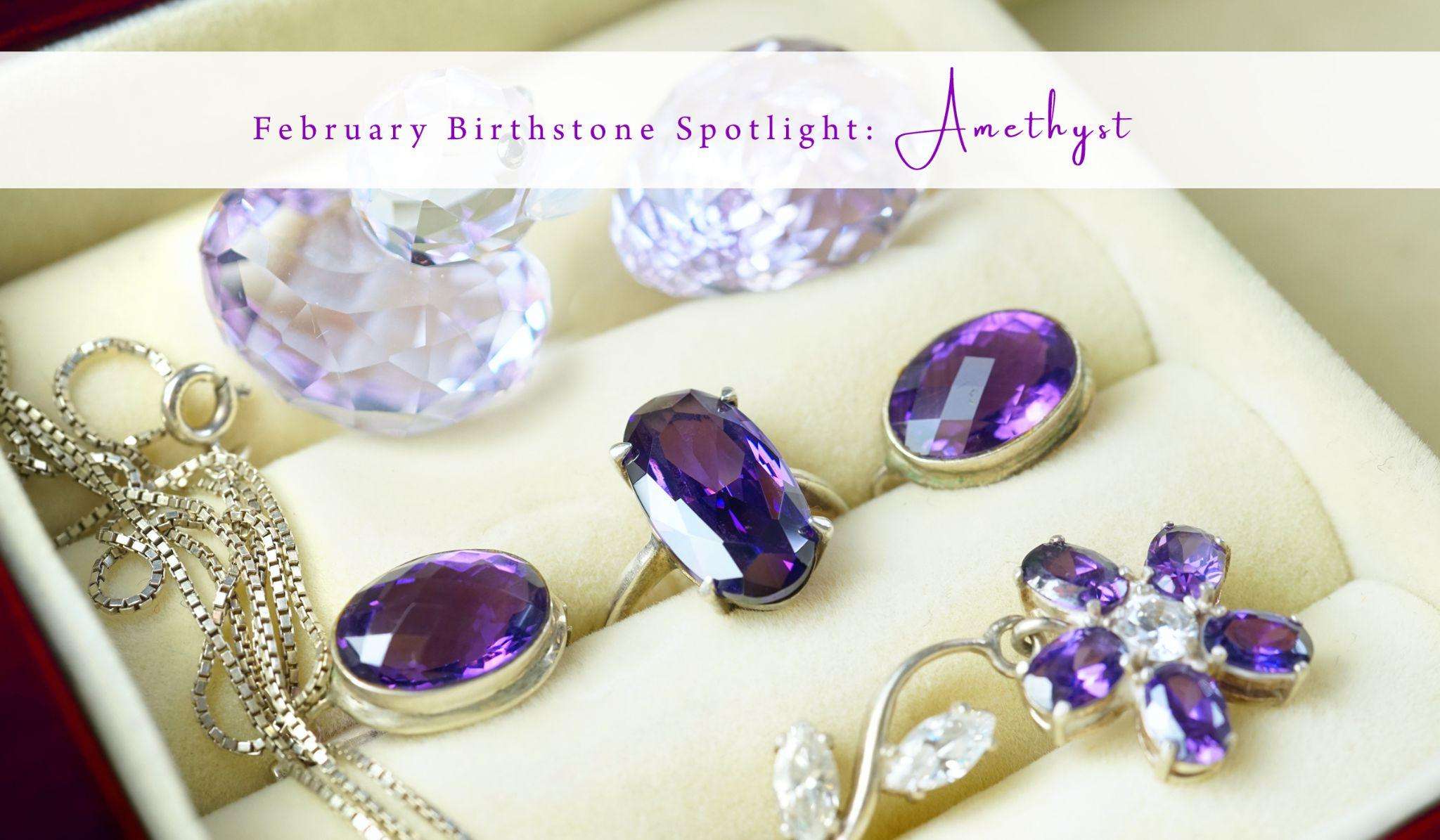Are you a gemstone enthusiast who is always on the lookout for the next stunning addition to your collection? Well, look no further! Here, we are all covered with the enchanting world of amethyst, the February birthstone. You’ll explore its fascinating beauty and historical significance and discuss amethyst stone prices. By the time you finish reading, you’ll understand why amethyst is a gem that has captured the hearts of gemstone seekers and collectors worldwide.
The Royal Purple Gemstone:
Amethyst – A name that evokes images of regal elegance and irresistible charm. This stunning gemstone belongs to the quartz family and is renowned for its exquisite purple color. But what sets amethyst apart from the rest of the gemstone world? Let’s explore the fascinating facets of this jewel.
- The Science Behind the Beauty
Amethyst’s striking purple coloration comes from trace amounts of iron in its crystal structure. Interestingly, amethyst can transform into a beautiful golden-yellow gem known as citrine when heated. This unique property has led to various experiments in gemstone crafting.
- Amethyst Varieties
Amethyst is available in various shades of violet, from subtle purple to deep purple. The most prominent amethysts have a rich, deep purple colour with flashes of red and blue, often referred to as “Siberian” amethyst.
Where Can You Find Amethyst?
Amethyst deposits can be found all around the world. Brazil, Uruguay, and Zambia are renowned for producing high-quality amethyst. Each location’s amethyst has unique characteristics, making it a delightful treasure for collectors.
● Amethyst in Jewelry
Amethyst’s charm extends to the world of jewelry, where it is a favored gemstone for necklaces, rings, earrings, and more. Its royal purple color compliments white and yellow gold settings, making it a versatile choice for jewelry designers and wearers.
Amethyst Stone Price: What to Expect
Now, let’s address every gem enthusiast’s question: What is the price range for amethyst stones? The amethyst stone price can vary significantly based on factors like size, color, clarity, and origin.
- Size Matters: Larger amethyst stones command higher prices, especially if they maintain exceptional color and clarity.
- Color Quality: As mentioned earlier, the finest amethyst displays deep purple with red and blue flashes. The closer a stone comes to this ideal, the more valuable it becomes.
- Clarity: Like all gemstones, amethyst is graded on its clarity. Stones that have fewer inclusions or flaws have a higher value.
- Origin: Amethyst from famous deposits, such as those in Zambia or Uruguay, can be more expensive due to their reputation for producing high-quality stones.
To give you a rough idea, smaller amethyst stones range from $10 to $50 per carat, while larger, more exceptional specimens can exceed $200 per carat.
The Healing Properties of Amethyst
Aside from its beauty, amethyst is believed to possess metaphysical properties. Some claim that it can promote calmness, clarity of thought, and even help with sleep disorders. While these claims are not scientifically proven, they add to the mystique of this tantalizing gem.
How to Care for Your Amethyst
To ensure your amethyst jewelry retains its beauty, it’s essential to care for it properly. Here are some tips:
- Gentle Cleaning: Clean your amethyst jewelry with warm, soapy water and a soft brush. Avoid harsh chemicals or ultrasonic cleaners.
- Protection: Store your amethyst pieces separately from other jewelry to prevent scratching.
- Avoid Heat and Sunlight: Prolonged exposure to heat or direct sunlight can cause fading.
- Regular Inspections: Periodically inspect your amethyst jewelry for loose stones or damage.
Conclusion
In the world of gemstones, amethyst stands out as a true beauty. Its regal purple color, rich history, and mystical properties have made it a favorite among gemstone seekers and collectors. Whether you’re drawn to its aesthetic appeal or its potential metaphysical benefits, amethyst is undoubtedly a gem worth exploring.
FAQs About Amethyst
Q1. What is the origin of the word “amethyst”?
The word “amethyst” has its roots in ancient Greek and is derived from the word “amethystos,” which means “not drunken.” The Greeks believed that amethyst could prevent intoxication.
Q2. Can amethyst jewelry be worn every day?
Amethyst is a relatively durable gemstone with a hardness rating of 7 on the Mohs scale. It can withstand daily wear, but it’s essential to care for it properly.
Q3. Are there any synthetic or imitation amethysts in the market?
Yes, synthetic and imitation amethysts exist. Original amethyst is valued for its natural beauty and metaphysical properties, so purchasing from reputable sources is essential.
Amethyst is more than just a beautiful gemstone; it’s a piece of history and a source of fascination for gem enthusiasts. Whether you’re considering adding it to your collection or wearing it as jewelry, amethyst’s allure is undeniable.

As the editor of the blog, She curate insightful content that sparks curiosity and fosters learning. With a passion for storytelling and a keen eye for detail, she strive to bring diverse perspectives and engaging narratives to readers, ensuring every piece informs, inspires, and enriches.










